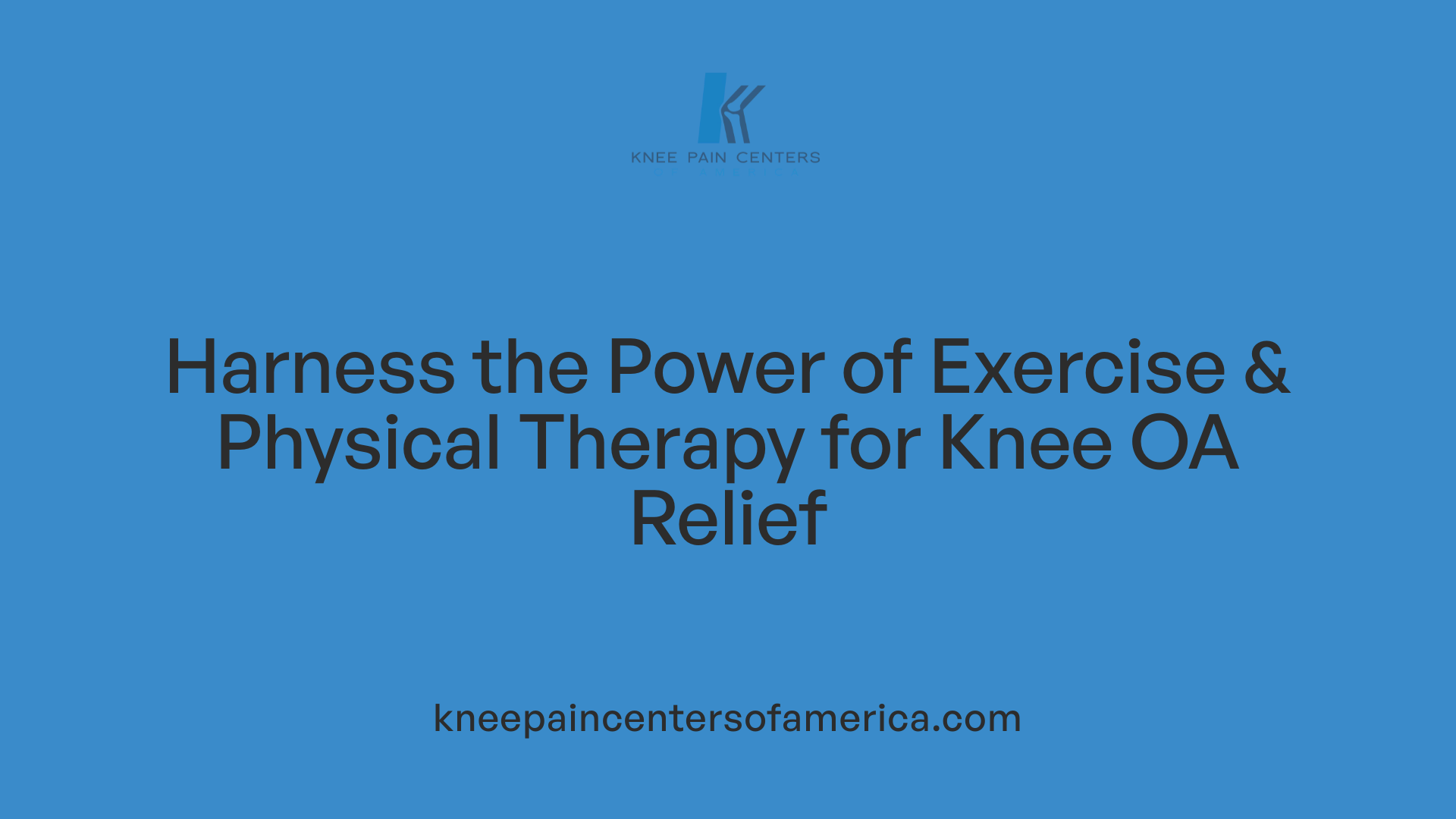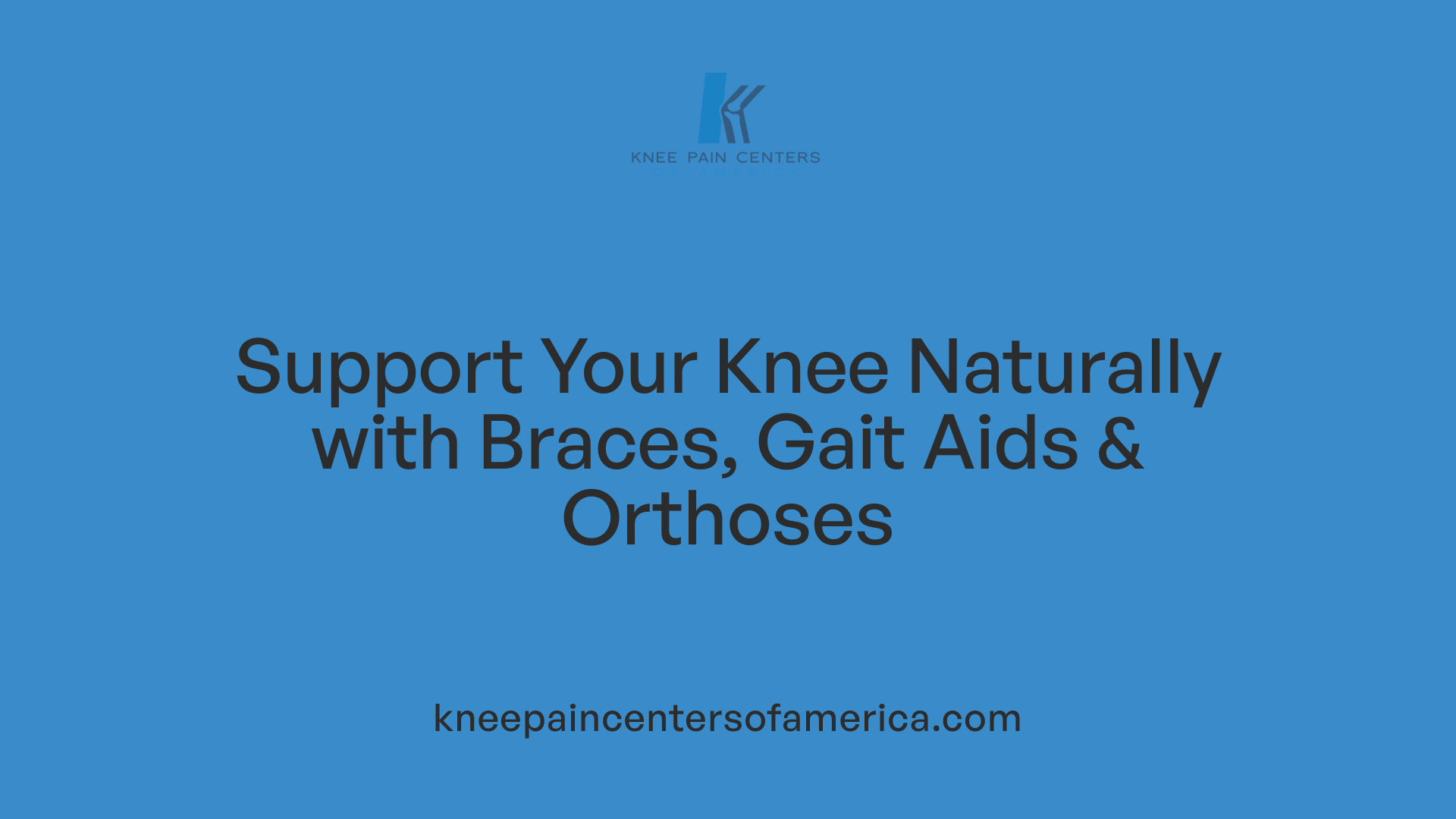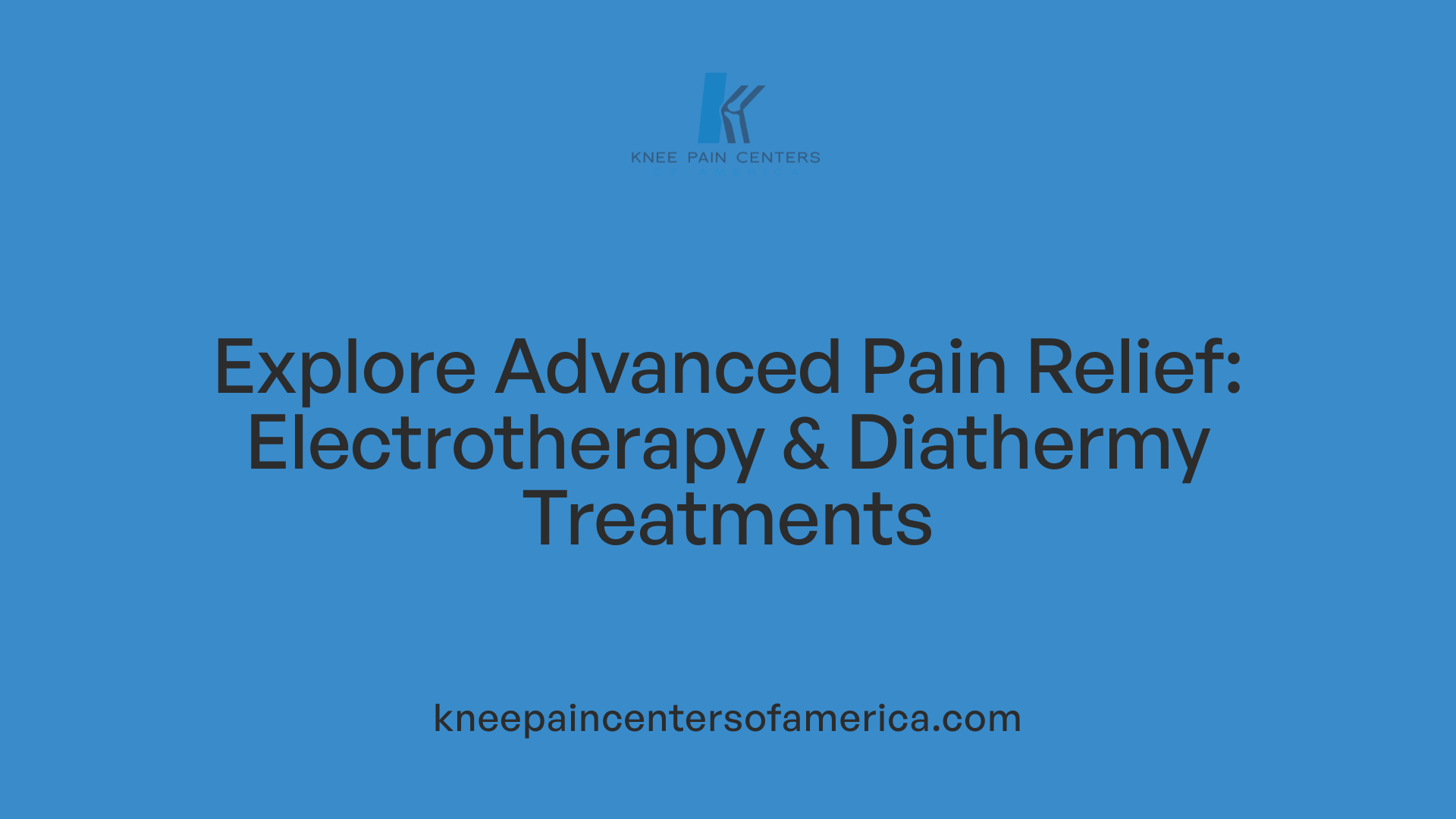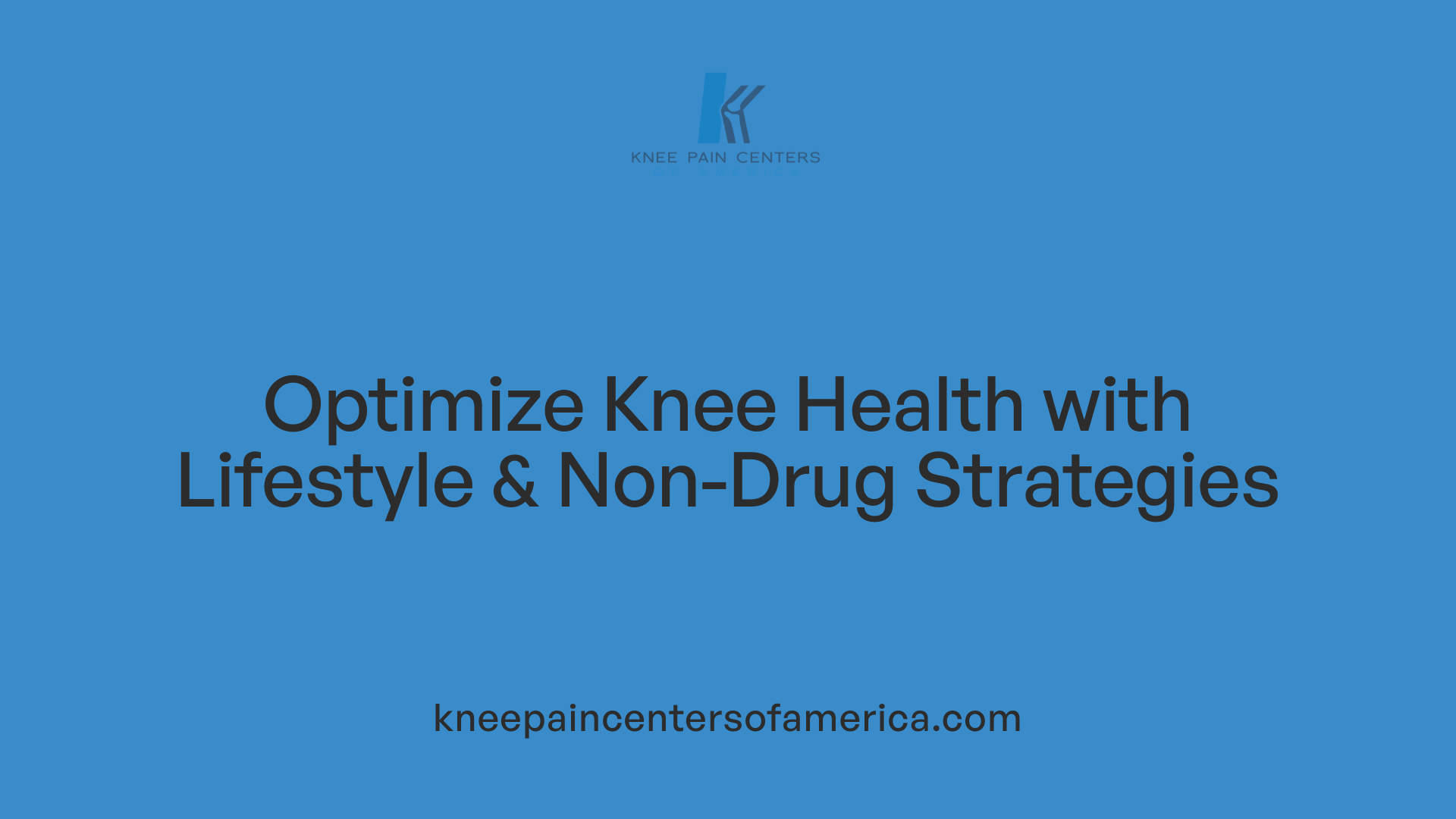Understanding Knee Pain Beyond Surgery and Medication
Knee osteoarthritis and related pain affect millions, significantly impairing mobility and quality of life. While surgery and medications remain common interventions, many patients seek alternative strategies to manage their symptoms without the risks and side effects associated with surgery or pharmaceuticals. This article delves into effective non-surgical, non-pharmacological treatment options—ranging from physical therapy and biomechanical aids to emerging minimally invasive therapies—empowering patients to alleviate knee pain through holistic and conservative care.
The Power of Physical Therapy and Exercise in Knee Pain Management

How do physical therapy and exercise help in managing knee osteoarthritis pain?
Physical therapy and exercise are essential for managing knee osteoarthritis (OA) pain. Strengthening the muscles surrounding the knee, particularly the quadriceps, improves joint stability, which reduces the strain on the damaged cartilage and alleviates pain. This process helps to protect the joint from further injury and supports better mobility.
Role of exercise in knee osteoarthritis
Exercise therapy includes a variety of targeted movements designed to improve joint flexibility and strengthen muscles. These exercises are carefully planned to avoid further joint damage while enhancing function. Engaging in muscle-strengthening activities and range-of-motion exercises plays a crucial role in reducing stiffness and improving the knee's overall function.
Types of exercises beneficial for knee pain
Beneficial exercises include quadriceps strengthening, hip strengthening, and stretching of the quadriceps, hamstrings, hip flexors, and iliotibial band. Low-impact aerobic activities, such as cycling, swimming, elliptical workouts, and level-ground walking, also maintain muscle mass and improve joint stability without overstressing the knee.
Mechanisms by which strengthening muscles reduces pain
Stronger muscles around the knee absorb more load and better support the joint, reducing abnormal forces and friction that exacerbate cartilage wear. This decrease in mechanical stress translates into less inflammation and pain over time.
Physical therapy techniques and patient education
Physical therapists often employ modalities such as ice, heat, and electrical nerve stimulation alongside exercise plans. Educating patients on proper techniques and activity modifications empowers them to manage their symptoms effectively and adopt lifestyle changes promoting joint health.
Benefits of low-impact activities and aerobic exercise
Low-impact activities enhance cardiovascular fitness and contribute to weight management, which significantly decreases the forces exerted on the knee with each step. Losing weight reduces knee joint stress by approximately four times the amount of weight lost per step, thereby further alleviating pain and improving function.
Regular and supervised physical therapy and exercise interventions thus play a pivotal role in controlling knee OA symptoms, improving quality of life, and potentially delaying the need for surgical procedures.
Biomechanical Aids: Supporting the Knee Joint Without Medication

Types of gait aids and braces
Biomechanical aids for knee osteoarthritis include gait aids like canes, as well as orthoses, insoles, and various braces. These devices are designed to provide support, stability, and realignment to the knee joint.
How braces redistribute joint forces
Knee braces work by redistributing forces within the joint, shifting weight away from the damaged or arthritic areas. This weight redistribution decreases friction and stress between bones, which can reduce pain and swelling.
Use of orthoses, insoles, and canes
Orthoses and insoles improve foot biomechanics and overall alignment, thereby influencing knee joint loading during walking or standing. Canes help by offloading body weight, providing improved balance and reducing the load through the affected knee.
Impact on joint alignment and pain reduction
By realigning the joint and modulating mechanical stress, biomechanical aids can slow the progression of osteoarthritis and alleviate symptoms. Improved alignment supports joint function and decreases discomfort during daily activities.
Role of knee braces in osteoarthritis
Knee braces—such as medial unloader valgus braces, hinge braces, and compression neoprene sleeves—offer external stability and targeted unloading of affected compartments. They complement physical therapy by enhancing support, allowing more comfortable mobility and activity engagement.
Electrotherapy and Diathermy: Advanced Non-Pharmacological Pain Relief

What types of electrotherapy techniques are used in knee osteoarthritis treatment?
Electrotherapy encompasses several methods such as Transcutaneous Electrical Nerve Stimulation (TENS), Pulsed Electrical Stimulation (PES), Interference Current (IFC), and Non-Invasive Interactive Neurostimulation (NIN). These techniques deliver electrical impulses to targeted areas, aiming to alleviate pain and improve knee function.
How do these electrotherapy techniques benefit patients?
Electrotherapy helps reduce post-traumatic pain and muscle spasms around the knee joint. It also enhances blood circulation, supporting tissue health and increasing the range of motion. These improvements collectively contribute to greater joint stability and patient comfort.
How does diathermy aid in tissue healing?
Diathermy uses electromagnetic energy to generate deep heat in body tissues. This heat boosts blood flow, which facilitates faster tissue repair and decreases inflammation. Enhanced circulation also assists in the removal of metabolic waste, promoting overall joint health.
What types of diathermy are used and what effects do they have?
Short-Wave Diathermy (SWD) and Microwave Diathermy (MD) are the main types employed in managing knee osteoarthritis. Both improve synovitis — the inflammation of the joint lining — and help to slow down cartilage loss, easing symptoms and potentially modifying disease progression.
How are electrotherapy and diathermy integrated into physical therapy?
These therapies are often part of comprehensive physiotherapy programs. They complement muscle strengthening exercises and biomechanical interventions by addressing pain and inflammation, thereby enabling patients to participate more effectively in active rehabilitation. A licensed physical therapist can tailor these modalities to each patient's needs, optimizing functional outcomes and quality of life.
Lifestyle Modifications and Non-Drug Strategies for Knee Health

Weight Management Impact on Knee Joint Stress
Managing body weight is crucial for reducing the burden on knee joints. Every pound of weight loss decreases knee stress by approximately four pounds with each step, illustrating how losing just 10 pounds can alleviate about 40 pounds of pressure on the knees. This reduction can significantly ease symptoms and slow osteoarthritis progression.
Benefits of Low-Impact Exercises
Engaging in low-impact exercises such as bicycling, swimming, level-ground walking, elliptical workouts, and low-weight high-repetition training helps maintain muscle mass and enhance joint stability. These activities support knee function without exacerbating joint wear or pain.
Importance of Activity Modification to Avoid Joint Overload
Adjusting daily activities to avoid high-impact motions that stress the knee can prevent further damage. Patients are encouraged to modify their routines to include gentle movements and rest periods that protect the joint while maintaining mobility and strength.
Use of Topical Analgesics and Muscle Rubs as Adjuncts
Topical treatments like analgesic gels, including those containing diclofenac or capsaicin, as well as muscle rubs, offer temporary pain relief. They serve as useful supplemental options alongside other management strategies, with minimal systemic side effects.
Dietary Supplements and Their Limited Role
Supplements such as glucosamine sulfate, chondroitin, and hyaluronic acid are commonly used by patients to support joint health. However, evidence of their effectiveness is limited, and major orthopedic guidelines do not strongly recommend them as primary treatments for osteoarthritis.
Incorporating these lifestyle and non-drug approaches can improve knee comfort and function, complementing medical therapies and potentially delaying disease progression.
Insights into Corticosteroid and Hyaluronic Acid Injections: When and Why They Matter
What role do corticosteroid injections play in treating knee osteoarthritis?
Corticosteroid injections are commonly used to alleviate pain and reduce inflammation in patients with knee osteoarthritis. These injections provide significant short-term relief, often helping patients manage acute flare-ups that cause swelling and discomfort. They improve pain, joint function, and overall quality of life, with benefits typically peaking between 4 to 10 weeks after the injection.
What are the limitations and recommended frequency for cortisone injections?
While effective, corticosteroid injections are not a cure and their effects are transient. To minimize potential joint damage and adverse effects, experts generally recommend limiting cortisone injections to no more than three to four times annually. Excessive use may accelerate joint degeneration, so they should be part of a broader treatment plan rather than a sole therapy.
How do hyaluronic acid injections function as joint lubricants?
Hyaluronic acid (HA) injections, often called viscosupplementation, serve as lubricants within the knee joint. They supplement the natural synovial fluid that cushions and lubricates cartilage, improving joint mobility and reducing pain. These injections are particularly helpful for patients with less advanced osteoarthritis who have not responded well to other conservative treatments.
Who are appropriate candidates for these injections and is their use safe?
Candidates for corticosteroid and hyaluronic acid injections usually include individuals experiencing moderate to severe symptoms that impact daily activities, especially when other treatments are insufficient. Both injections have favorable safety profiles when used appropriately. However, corticosteroid injections require cautious use due to their potential impact on joint tissues, while HA injections should not be administered more than three times a year to avoid risks.
Why is it important to combine injections with complementary treatments?
Because the relief from these injections is temporary, they are most effective when combined with other therapies such as physical therapy, exercise, weight management, and biomechanical aids. This integrated approach helps maintain joint function, reduce symptom recurrence, and delay progression of osteoarthritis.
Emerging Non-Surgical Therapies: Promising Frontiers in Knee Pain Relief
What Are Platelet-Rich Plasma (PRP) and Regenerative Medicine Approaches?
PRP therapy involves injecting a concentration of the patient's own platelets into the knee joint. These platelets contain growth factors that may stimulate tissue repair and cartilage regeneration, offering potential pain relief and improved function. Although PRP is gaining attention and used in some clinics, it remains an emerging treatment with limited definitive evidence and is not yet FDA-approved. Other regenerative medicine techniques, like stem cell injections and autologous conditioned serum (ACS), aim to support cartilage repair but similarly await more conclusive research.
How Does Genicular Artery Embolization (GAE) Work to Reduce Inflammation?
GAE is a minimally invasive outpatient procedure designed for patients who are not candidates for knee replacement surgery. It involves threading a catheter into the arteries supplying the knee and injecting microscopic particles to reduce abnormal blood flow and inflammation in the joint. Studies report significant pain reduction, with patients' scores dropping from 8/10 to around 3/10 within the first week and sustained benefits up to a year. The procedure is generally well tolerated, with minor transient side effects, making it a promising option for long-term pain relief without surgery.
What Potential Future Pharmacologic Therapies Are Being Explored?
Researchers are investigating new pharmacological agents targeting the underlying disease processes of knee osteoarthritis. These include disease-modifying anti-rheumatic drugs (DMARDs) that may slow joint damage, nerve growth factor antagonists to block pain signals, and gene therapies targeting specific genetic pathways implicated in osteoarthritis. Advances in genetic understanding might lead to drug repurposing and personalized medicine approaches that tailor therapies to individuals' molecular profiles.
What Minimally Invasive Outpatient Procedures Are Available or Under Study?
Beyond GAE, minimally invasive arthroscopic procedures continue to be refined for managing cartilage damage and meniscal tears. Techniques such as microfracture and autograft mosaicplasty focus on cartilage repair, particularly in younger patients. Experimental treatments, including sterilized cadaver meniscus implants and cell-based meniscus regeneration, are under development. These outpatient procedures aim to delay or avoid the need for joint replacement by preserving knee joint structure and function.
What Are the Limitations and Ongoing Research Needs in Novel Treatments?
While emerging therapies like PRP, GAE, and regenerative medicine offer hope, their long-term efficacy and safety require confirmation through larger, high-quality randomized clinical trials. Most regenerative treatments are not yet standard of care or FDA-approved, and costs and insurance coverage vary. Patient selection criteria are still being refined to maximize benefits. Continued research will clarify optimal treatment timing, combinations, and mechanisms to effectively manage knee osteoarthritis and improve patient outcomes over time.
Choosing the Right Path for Knee Pain Management
Knee pain management without surgery or medication offers diverse, effective approaches focused on improving function and quality of life. Physical therapy combined with biomechanical supports forms the cornerstone of conservative treatment, strengthening muscles and stabilizing joints to diminish pain. Electrotherapy and diathermy provide additional symptomatic relief while lifestyle changes and careful activity modifications reduce joint stress. Though injections like corticosteroids and hyaluronic acid can temporarily ease symptoms, their use should be judicious and complement non-invasive care strategies. Promising new therapies such as platelet-rich plasma and genicular artery embolization introduce hope for advanced pain relief without surgery. Ultimately, successful management requires a personalized strategy, guided by healthcare professionals and active patient involvement, to navigate options and maintain knee health as effectively and safely as possible.
References